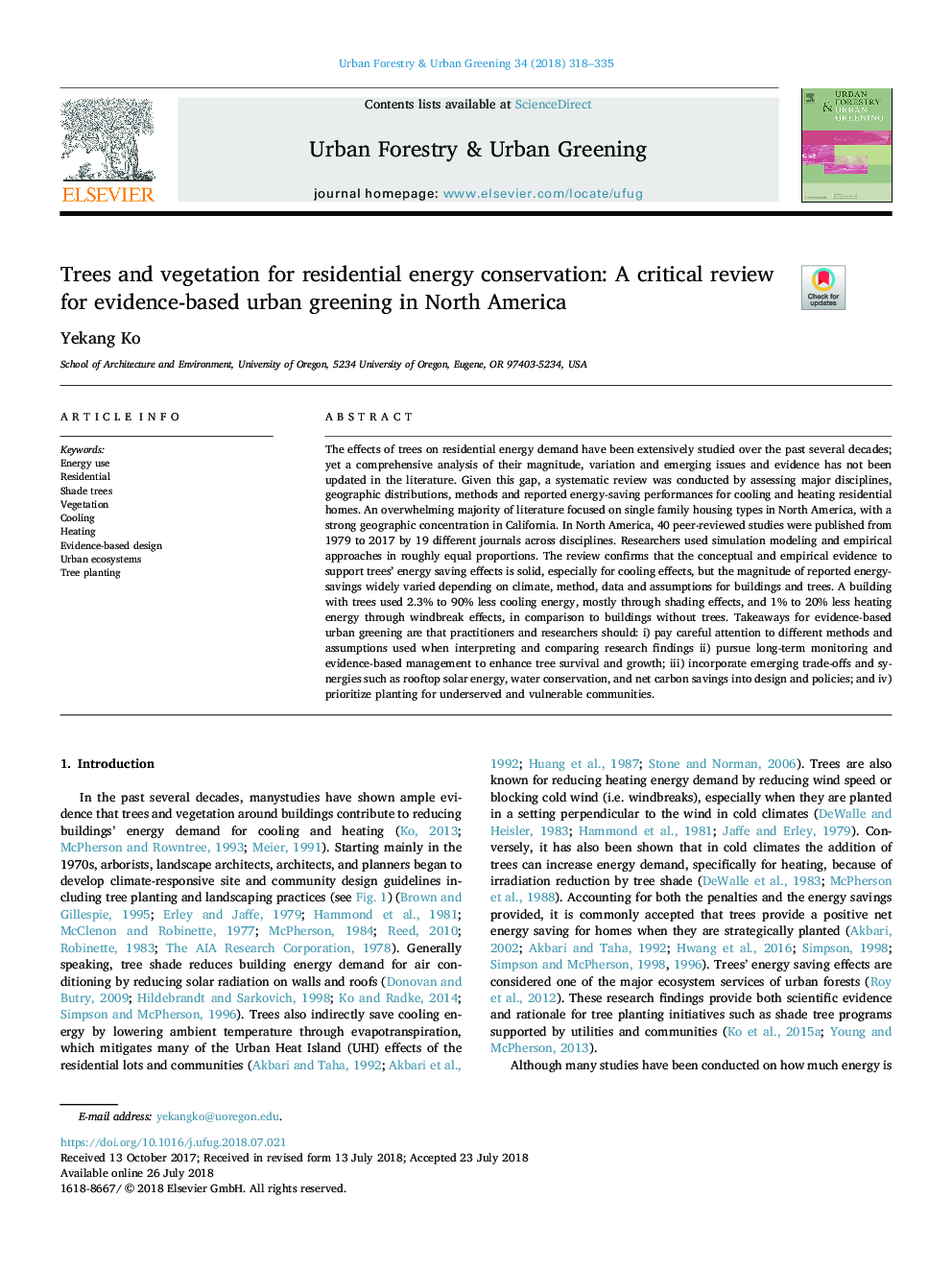| Article ID | Journal | Published Year | Pages | File Type |
|---|---|---|---|---|
| 6549116 | Urban Forestry & Urban Greening | 2018 | 18 Pages |
Abstract
The effects of trees on residential energy demand have been extensively studied over the past several decades; yet a comprehensive analysis of their magnitude, variation and emerging issues and evidence has not been updated in the literature. Given this gap, a systematic review was conducted by assessing major disciplines, geographic distributions, methods and reported energy-saving performances for cooling and heating residential homes. An overwhelming majority of literature focused on single family housing types in North America, with a strong geographic concentration in California. In North America, 40 peer-reviewed studies were published from 1979 to 2017 by 19 different journals across disciplines. Researchers used simulation modeling and empirical approaches in roughly equal proportions. The review confirms that the conceptual and empirical evidence to support trees' energy saving effects is solid, especially for cooling effects, but the magnitude of reported energy-savings widely varied depending on climate, method, data and assumptions for buildings and trees. A building with trees used 2.3% to 90% less cooling energy, mostly through shading effects, and 1% to 20% less heating energy through windbreak effects, in comparison to buildings without trees. Takeaways for evidence-based urban greening are that practitioners and researchers should: i) pay careful attention to different methods and assumptions used when interpreting and comparing research findings ii) pursue long-term monitoring and evidence-based management to enhance tree survival and growth; iii) incorporate emerging trade-offs and synergies such as rooftop solar energy, water conservation, and net carbon savings into design and policies; and iv) prioritize planting for underserved and vulnerable communities.
Keywords
Related Topics
Life Sciences
Agricultural and Biological Sciences
Forestry
Authors
Yekang Ko,
